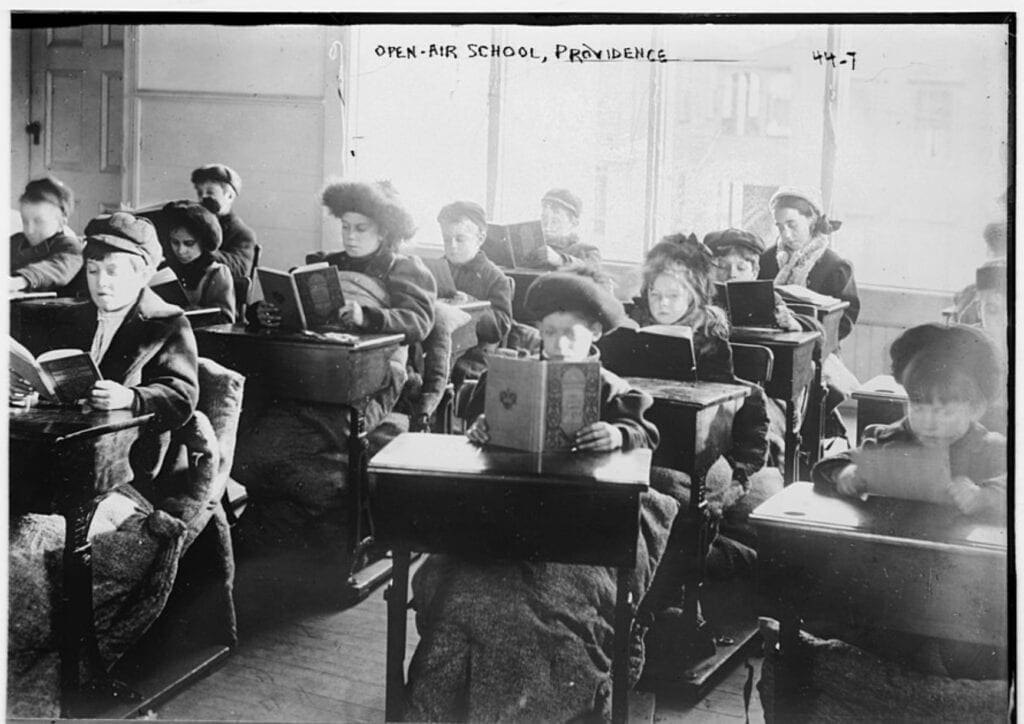Search Posts
Recent Posts
- Rhode Island Weather for May 31, 2025 – Jack Donnelly May 31, 2025
- Burn with Kearns: Fix Your Foundation: Core, Mobility & Joint Health – Kevin Kearns May 31, 2025
- In the News… quick recap of the week’s news (5.31.25) May 31, 2025
- Business Beat: Navigant CU receives prestigious Community Impact Award from NEACH May 31, 2025
- To Do in RI: Taste of Rhode Island. Food, libations, entertainment, auction for Matunuck Oyster Bar May 31, 2025
Categories
Subscribe!
Thanks for subscribing! Please check your email for further instructions.
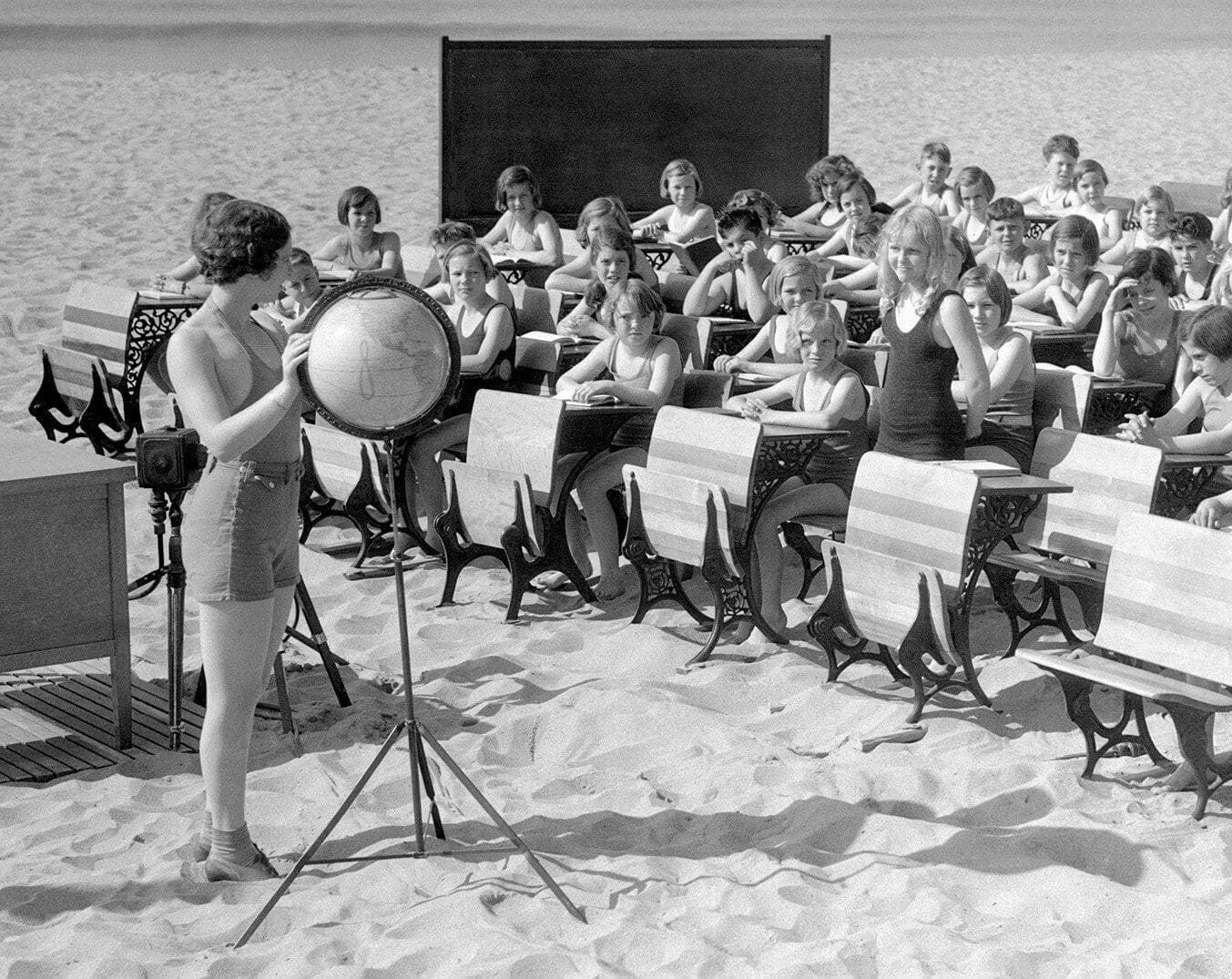
TOP STORY: Back-to-school. Another time, another pandemic in Rhode Island
This story, was the top story read in the last week, with the exception of our almost-daily Coronavirus Updates. As we address back-to-school, we run it again for you.
We’ve heard that we are safer from the spread of coronavirus if we are in well ventilated areas – especially if we are with other people. It’s been thought that this is one reason why demonstrators have not come down with COVID19 – more – because they were in the open air – and wearing a masks perhaps more than other groups.
We thought outdoor summer camps must be pretty safe for children to go to, but then this weekend we learned hundreds of kids from one camp have come down with coronavirus. Medical professionals attribute inconsistent mask wearing (staff only), combined with not opening doors and windows enough, as the cause.
As we approach the fall, what will happen to outdoor dining, small backyard barbecues (we just heard about a coronavirus breakout from an indoor baby shower of 30 people).
With thoughts of Halloween, a $10billion+ business – are quickly dismissed with – we’ll skip this year – ZOOM doesn’t give candy through computer screens, does it?
What will Thanksgiving look like? What will Christmas time holidays look like? Will we be cooking tiny turkeys for tiny groups who already live with us in our homes?
Let’s Open the Windows – and never shut them!
Just before the Second World War, the country was experiencing a big rise of tuberculosis. The common treatment for those who came down with “TB” was to go to a convalescent home, or sanatorium, “in the country”. Struggling to figure out how to educate children during this time, medical professionals began to wonder what if you went to school – in the country? And that idea was the birth of the Open Air School movement.
Open Air Schools or Schools of the Woods
Designed for the purpose, open air schools were built for many of the world’s children. Fresh air, good ventilation, exposure to the outside – all design concepts to improve the children’s health. Many of the schools were built in the country, all the better to be away from the density of city population.
The schools were begun in Germany, and soon the concept spread throughout Europe – and then to the US. However, you can go way back to Athens and Rome, children “went at five o’clock in the morning by the light of a smoking lamp to begin their studies in porticoes, covered at the top but open at the sides”.
First Open Air School in US – built in Providence
In the United States of America, the first “fresh-air school” was established in Providence, Rhode Island, in1908. The school was built in Providence, Rhode Island. Begun by two women, Drs. Mary S. Packard and Ellen A. Stone. Packard was the first woman to graduate from the Johns Hopkins School of Medicine, in 1897, and Stone, in 1900.
Classes were small, maintained groups, with open windows, or with no windows, and school took place in warm weather – but also in freezing weather – with students wrapped in coats, wearing gloves and boots – and drinking sterilized warm milk and “wholesome food”. Some other schools were far out in the country, so students attended as a residential program with “dorms” exposed to the night air. Every morning classrooms were “deodorized and sterilized”.
The Providence school was another step towards holistic education – “a blessing of a sound mind in a sound body”. The article, here ends with, “Fresh air means health”.
From “Does Cold Weather Sharpen a Schoolboy’s Wits?”, The Scrap Book (May 1908) with photos taken by the Providence Journal.
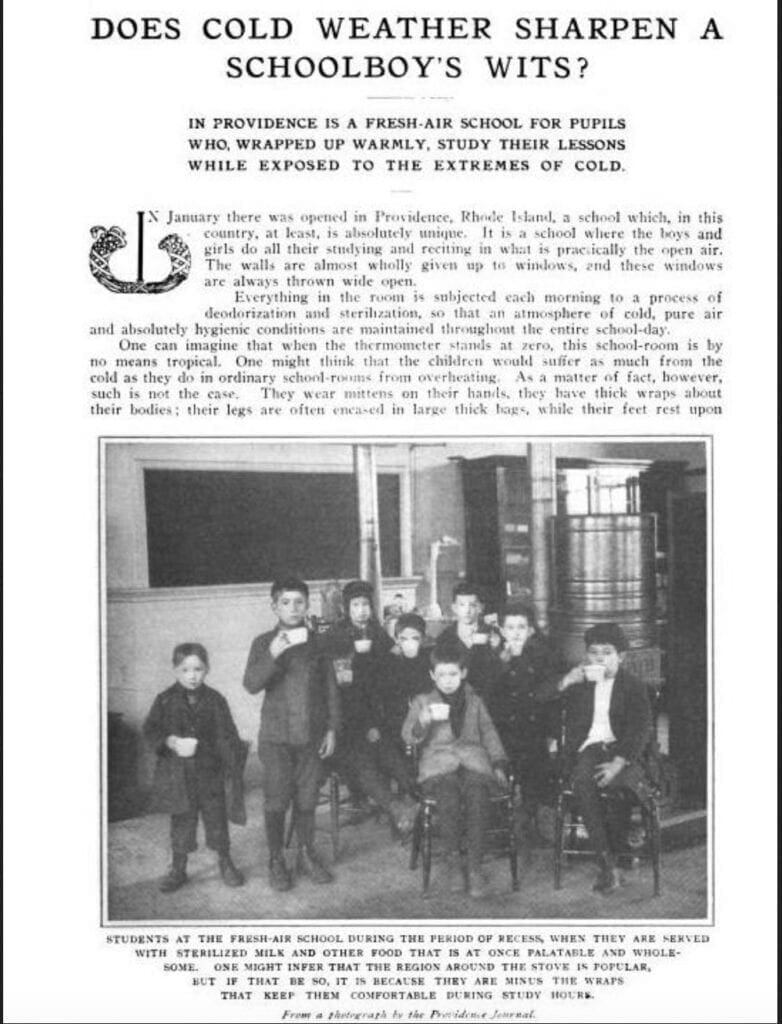
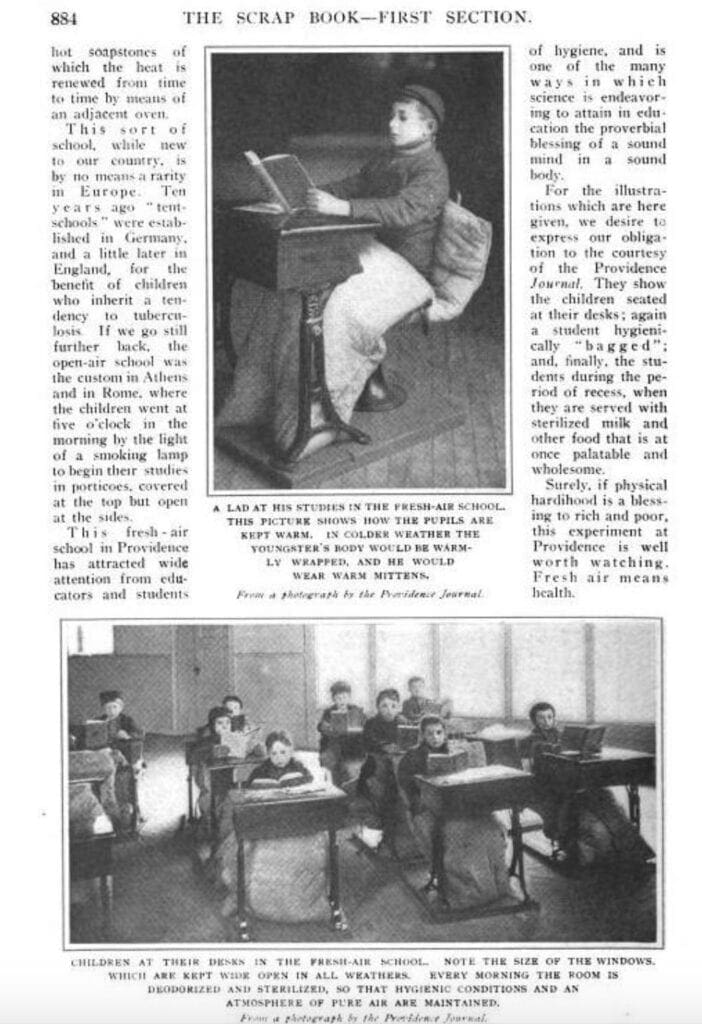
Here is a link to Mary Korr’s article in 2016 for the RI Medical Society Journal on the RI Open Air School – located at 56 Meeting Street on Providence’s East Side.
http://www.rimed.org/rimedicaljournal/2016/09/2016-09-75-heritage.pdf
Here is Dr. Chapin’s rules for children at the school:
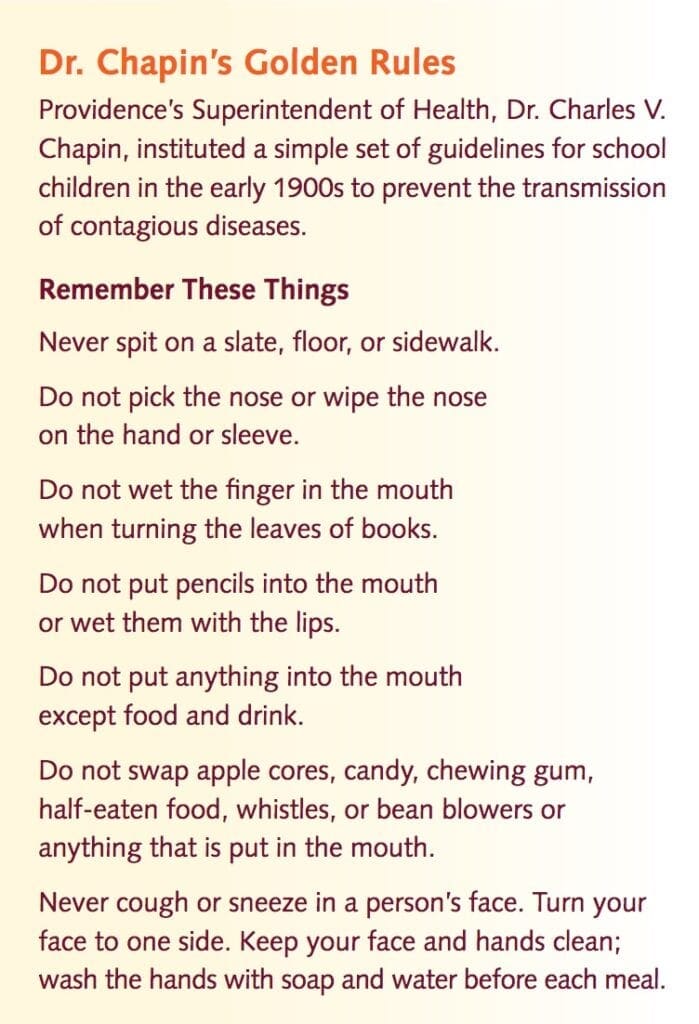
By the end of the school’s first year, none of the students had gotten sick, and their health had even improved. Fueled by this success, the idea of open-air school quickly spread, and within two years 65 of them had opened in the United States, including 11 in Providence alone.
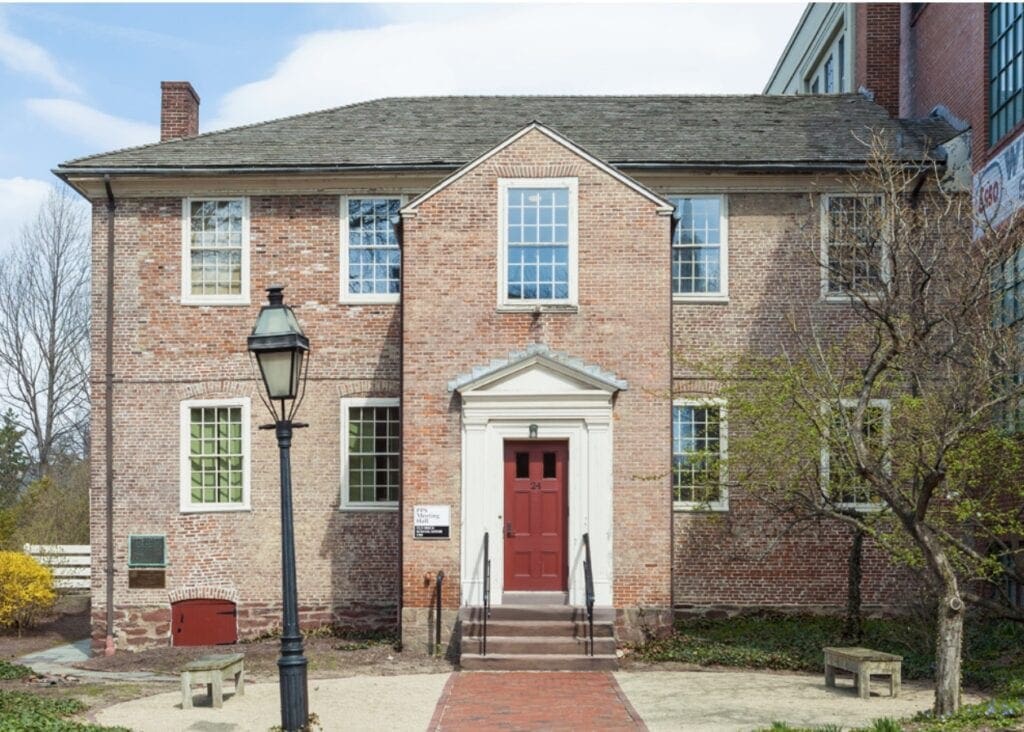
Today, home of the Providence Preservation Society
What can we learn?
Can we learn something from this early experiment and a different pandemic? While we’ve focused on living in the uniqueness of summer, not weather and beaches, we know fall and winter is right on the horizon. As vaccine researchers churn away to meet their goal of something in the pipeline before the end of the year, we will soon be pivoting to living in cool weather – when dining won’t be done at a table moved into the street or parking lot, and holidays will be throwing us all into heightened anxiety.
What do we know? What do we not know? As we prepare to send our precious children back to school, will we make the best decision? There are no secret answers waiting for us to find – there is only history, science, and our best instincts to guide us.
Surely this is not humanity’s last pandemic – what lessons and creative ideas will we leave for those who come after us?
The open air concept came to an end after World War II – after the discovery of streptomycin and other antibiotics/vaccines. Tuberculosis receded as a major health threat after the mid-1940s.
Within a decade, the open-air school movement had come to an end as well.
